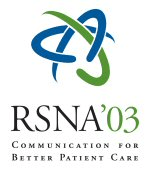Abstract:Purpose/Objective: Patients with local recurrences or new head and neck primaries in previously irradiated tissues have few options for salvage treatment. Chemotherapy in this setting generally yields a median survival rate of 6 to 8 months and a 1-year survival rate of 25-40%. One option for select patients is to undergo re-irradiation with concurrent chemotherapy. The purpose of this study is to report the initial clinical results of the Fox Chase Cancer Center Phase I and II prospective re-irradiation studies, which were the pilot studies for the current RTOG 99-11 national protocol. Materials/Methods: Between 7/96 and 1/02, 38 patients with locally recurrent unresectable squamous cell carcinoma of the head and neck were treated with concurrent chemotherapy and re-irradiation in our department on 2 prospective trials. All patients had received prior radiation therapy to the head and neck region. Patients received cisplatin 12-15 mg/m2/day and paclitaxel 15-20 mg/m2/day for 5 days along with external beam radiation therapy to the site of recurrence. Hyperfractionated radiation therapy was administered twice daily at a dose of 1.5 Gy per fraction to a total of 15 Gy per each week of chemotherapy. This regimen was repeated on days 1-5 of alternating weeks for a maximum of 4 cycles (total radiation dose of 60 Gy). Granulocyte colony stimulating factor was administered between cycles in the last cohort of the phase I trial and to all patients enrolled on the ensuing phase II trial. Results: Median follow-up was 10 months (range: 17 days-5.2 years). The median prior radiation dose was 64.2 Gy (range: 15-74 Gy). Actuarial rates of overall survival were 50% and 35% at 1 and 2 years, respectively. Median survival was 12.4 months. During follow-up, 63% of patients experienced local progression of disease. Actuarial progression-free survival at 1 year was 33% with a median time to progression of 7.3 months. One patient developed distant metastases in the lung at 15.3 months. Grade 3-4 toxicity included neutropenia in 7 patients (18%), nausea in 3 patients (8%), emesis in 2 patients (5%), and mucositis in 2 patients (5%). No patients experienced grade 3-4 loss of taste or dry mouth. One patient developed osteoradionecrosis of the mandible requiring hemimandibulectomy. One patient developed radiation induced temporal/parietal lobe necrosis and vascular damage resulting in death. Conclusions: Hyperfractionated split course re-irradiation and concurrent cisplatin and paclitaxel chemotherapy is a reasonable treatment approach in patients with recurrent unresectable head and neck cancer. Preliminary results demonstrate durable control in select patients although late toxicity can occasionally be significant. Outcome appears superior to chemotherapy alone in this setting. We await the initial results of the current national RTOG 99-11 which employs the same dose and schedule of radiation therapy and chemotherapy.
Questions about this event email: n_kramer@fccc.edu
Kramer DO, N,
Toxicity and Outcome Analysis of Patients with Recurrent Head and Neck Cancer Treated with Hyperfractionated Split-Course Re-irradiation and Concurrent Cisplatin and Paclitaxel Chemotherapy from Two Prospective Phase I and II Studies. Radiological Society of North America 2003 Scientific Assembly and Annual Meeting, November 30 - December 5, 2003 ,Chicago IL.
http://archive.rsna.org/2003/3241075.html

